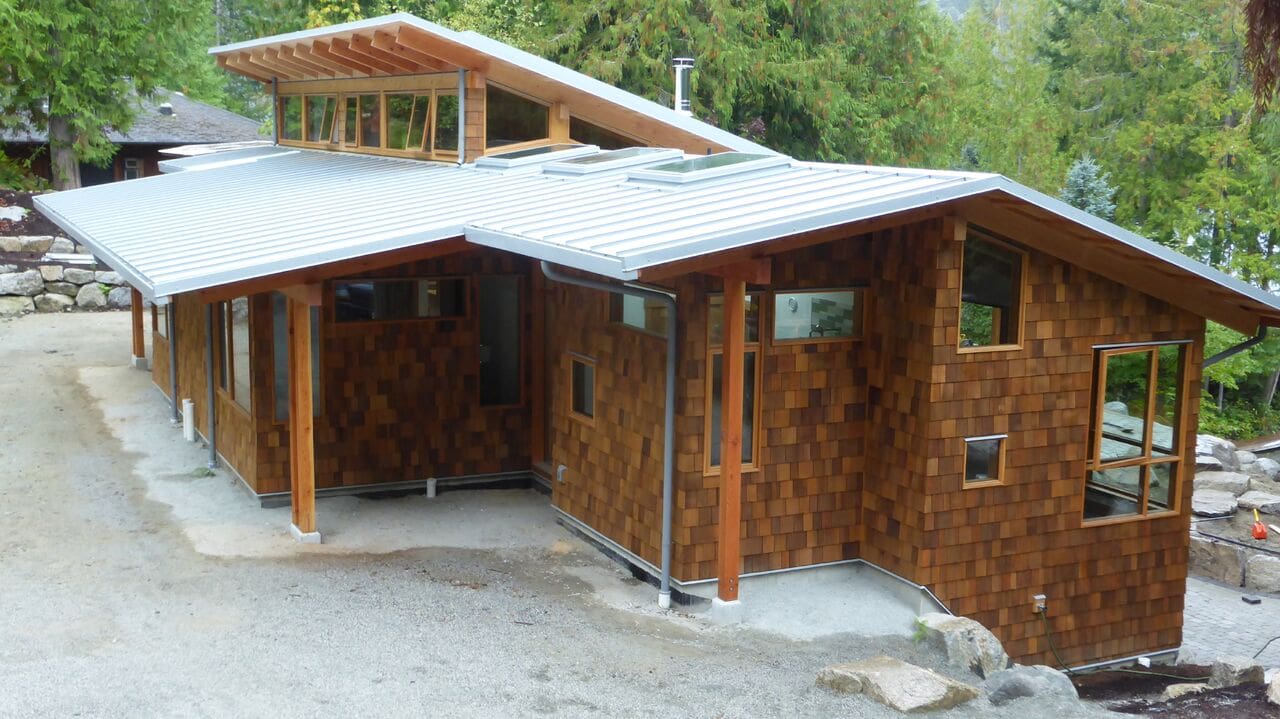What wood will create the look I want for my timber frame home? Which tree species is most durable to build with? How much will it cost? These are the most common questions we get asked by clients as they decide on the right timber for their home.
We previously wrote an article on the best type of wood to build a log home, you can read the article here. Timber frame and log homes are different, so wood selection may vary for each.
When it comes to building a timber frame home, you’ll want to consider three things: the type of wood, how the timber is processed, and what finished look you desire.
Here’s a step-by-step guide:
Most common wood species used for building a timber frame home

Below is a rundown of the most common wood species used for building timber frames.
Oak:
This is the strongest and hardest species of wood available. It’s commonly used in Europe and eastern Canada for building timber frames as it’s readily available. Oak timbers are becoming used less frequently due to increased difficulty in finding high quality pieces in suitable sizes
Douglas Fir:
This is the most popular species of wood used in timber frame homes due to its strength and beauty. Most timber frames built in
western Canada and in B.C. are made with Douglas Fir. This wood gets a high grade for its structural strength, which makes it an engineer’s favourite to build with.
Western Red Cedar:
This is the premium choice for exposed timber homes since it can handle weather conditions better than any other species. One design consideration: Cedar is a softer and lighter wood, so beam sizes have to be larger compared to other species.
Pine and Spruce:
These are strong softwoods that are mostly used in eastern Canada. The name “softwood” does not mean that the wood is weak. In fact, softwood species (including Douglas Fir) are known for their structural strength and flexibility for design. Pine and spruce are some of the most economical varieties of timber available.
Deciding how the timbers are processed

Free of heart centers (FOH):
These timbers come without the center (or heart) of the tree trunk. This makes the timber more stable, straight, and more resilient to cracks, checking and twisting.
Boxed heart:
Boxed heart timbers are sawn or milled so that the center of a tree remains intact. These beams have more movement and are therefore more prone to cracking.
Green timbers:
When a tree is first cut it’s considered green. The wood has not been dried and its moisture content is high. This means the timbers will shrink over time, causing movement along the way. To ensure your home doesn’t shift or twist in the years to come, we don’t recommend that you use green timbers.
Kiln dried timbers:
Kiln drying is a process that carefully dries the wood at a very slow rate so that it doesn’t cause damage to the beams. Timbers that undergo kiln drying will typically have a consistent moisture content of 12-16%. The kiln drying process helps make the timber more stable, less likely to crack, and keeps shrinkage to a minimum.
Choosing the right finished look for your timber framed home

Smooth finish:
If you want a modern and sleek look for your timber frame, you’ll want a smooth finish. All four sides of each beam will be planed, which results in a consistent size and shape. This is the ideal look that many timber frame home owners want.
A rustic look:
If you are looking for a more natural feel, you might want to consider a rustic look. These timbers are not planed, so they have more character and a more unprocessed appearance. This is also the more economical finishing option.
So, which wood is best for your timber frame home?
At the end of the day, selecting the right wood species, processing, and finishing comes down to your own personal style and budget. We encourage you to discuss these options with your designer or log home company. They may have valuable suggestions based on your location, climate, and the species of wood that they have readily available.
If you are considering building a timber frame home and are wondering which species of wood are available, please feel free to contact us at info@artisanlog.com


